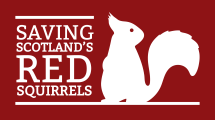…partners. The partnership is also supported by an extensive network of over 500 landowners covering well over 4,000 square kilometres. Saving Scotland’s Red Squirrels is grateful to all the organisations, trusts and individuals who help make our work possible. Nature Restoration Fund The Scottish Government’s Nature Restoration Fund is a commitment in the current Programme for Government for multi-year funding… […]
Read More…
…of grey squirrels concentrated in the built-up area. Here, Saving Scotland’s Red Squirrels are working to contain the overspill of grey squirrels into Aberdeenshire. For the last twelve years, Saving Scotland’s Red Squirrels has implemented control measures along the Highland Line from the Gare Loch to Montrose to contain the incursion of the non-native grey squirrel into red squirrel strongholds… […]
Read More…
…on our Local Network and Volunteer Group Directory for full details. In Fife and the Eastern Lowlands there is both an independent project (funded by the Red Squirrel Survival Trust) and an independent volunteer led group (in Fife) working together to protect red squirrels in the region. For more information on any of these areas email us on squirrels@scottishwildlifetrust.org.uk. … […]
Read More…
…Scottish Squirrel Group have been tasked with drafting an ambitious 50-year vision for red squirrel conservation in Scotland. The revised Strategy will cover a 10-year timeline (2025 – 2035) informed by this vision, and will be developed using the International Union for the Conservation of Nature (IUCN) Guidelines for Species Conservation Planning, the gold standard for species conservation planning which… […]
Read More…
… Emma: “The work that we do in the north east has evolved over the last 2-3 years, as we inch ever closer towards our goal of eradication of grey squirrels from Aberdeen. In the first 10+ years of the project we relied on a team of staff to carry out the majority of work on the ground, with volunteers… […]
Read More…
…for red squirrels and, in the longer term, reduce the rate of transmission of the virus. If you are interested in getting involved to help slow the spread of squirrelpox , please get in touch, or read our Squirrelpox Action in the Central Lowlands Toolkit for more information. Read the full report: Squirrelpox Detection in the Central Lowlands 2017-2020 … […]
Read More…
…control activities in the area. This will pave the way for a long-term southward shift of the current “Highland Line Control Zone” – the 10km zone stretching from Balloch to Montrose and buffering the diagonal Highland Boundary Fault Line, where Scotland’s Highland red-only squirrel population intersects with the most northly reaches of grey squirrels incurring from the Lowlands. These new… […]
Read More…
…attach radio collars. Trapping was carried out in the National Trust-owned woodlands immediately adjacent to the town and in the residential gardens of local volunteers. The radio-collared individuals were then regularly tracked throughout the summer and their locations recorded, to investigate how red squirrels move around the town and make use of the available resources. Alongside the live-capture trapping and… […]
Read More…
…(Scottish Wildlife Trust registered) – Central Lowlands and North East Go to www.scottishsquirrels.org.uk Click the Hub Login box, then click Register Once registered, login with your details Join the SSRS volunteering group (following the steps in this video, especially at the beginning and at minute 01:58). A member of the team will be in touch and/or send you an invite… […]
Read More…
…for more information. Landowners Landowners in certain areas can control grey squirrels under Forestry Grant Scheme funding, or join the project’s trap-loan scheme. Woodland owners, meanwhile, can adjust the management of their woods to benefit red squirrels. Please contact your local SSRS or Scottish Forestry staff for more information. Area Contact Susie McNaughton Highland Line Conservation Lead smcnaughton@scottishwildlifetrust.org.uk… […]
Read More…
